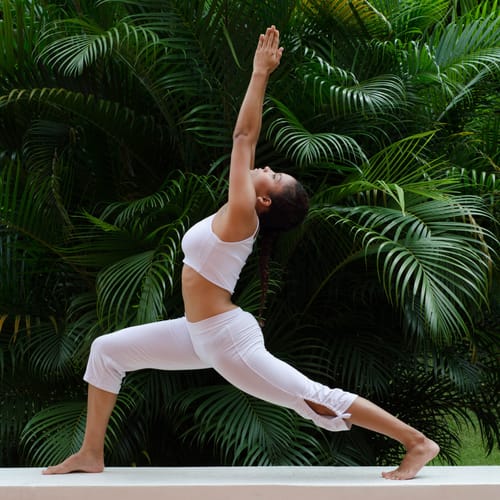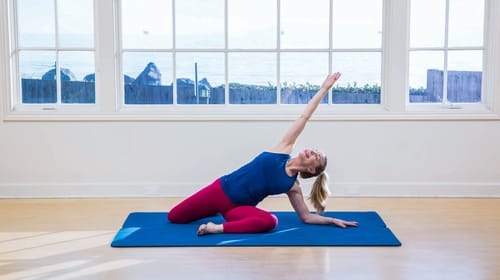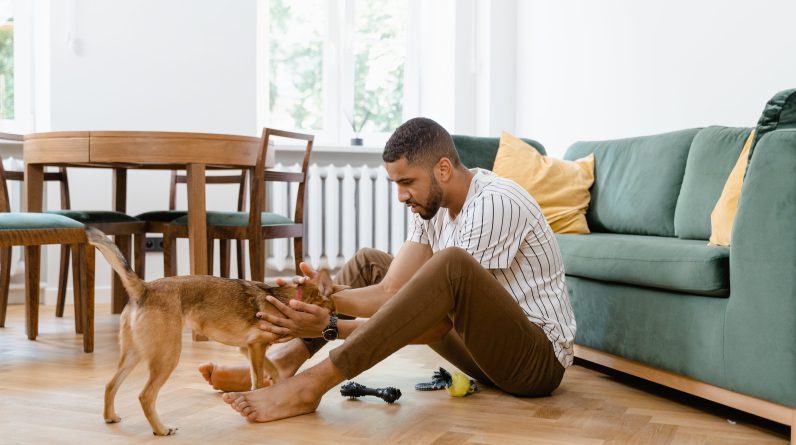
Discover the Transformative Power of Pilates: A Comprehensive Guide to Mind-Body Fitness
Pilates has emerged as a popular exercise method in recent years, renowned for its ability to enhance strength, flexibility, and overall well-being. Developed by Joseph Pilates in the early 20th century, this system of physical fitness has become a cornerstone in the world of exercise and rehabilitation. In this article, we will explore the principles and benefits of , delving into why it has become a go-to workout for people of all ages and fitness levels.
Pilates is not just a workout; it is a mind-body practice that emphasizes core strength, control, and precision. It involves performing a series of controlled movements on a mat or specialized equipment, such as the reformer or Cadillac. By engaging the mind and body, promotes proper alignment, breathing, and smooth, .
The Definition of Pilates
is a form of exercise that focuses on developing strength, flexibility, and control of the body. It was developed by Joseph in the early 20th century and originally called “Contrology.” The method incorporates a series of precise and controlled movements performed on a mat or specialized equipment, such as the Reformer or Cadillac.
Pilates exercises target the deep core muscles, including the muscles of the abdomen, lower back, hips, and glutes. The practice emphasizes proper alignment, breathing techniques, and mindful movement to improve body awareness and promote efficient and controlled movements.
The primary principles of Pilates include concentration, centering, control, precision, breath, and flow. These principles guide the execution of exercises and aim to create a harmonious integration of the mind and body.
Pilates is known for its emphasis on developing a strong and stable core, which is considered the center of power and stability for the body. By strengthening the core, helps improve posture, balance, and overall body alignment.
While Pilates offers a low-impact form of exercise, it can be tailored to different fitness levels and goals. It is suitable for individuals of various ages and abilities, including beginners and those seeking rehabilitation or injury prevention. can be practiced as a standalone workout or incorporated into a broader fitness routine.
Overall, provides a holistic approach to physical fitness, combining strength, flexibility, and body awareness to enhance overall well-being.
The History of Pilates
Joseph Pilates
Joseph developed in the early 20th century. As a child, he suffered from asthma, rickets, and rheumatic fever, which inspired him to focus on exercise and physical therapy. In the 1920s, he moved to the United States and opened his own studio in New York City.
Spread in Popularity
After Joseph Pilates began teaching his method, it began to gain popularity among dancers and performers in the United States. In the 1980s and 1990s, it became increasingly popular as a form of exercise and physical therapy for people of all ages and abilities.
Different Types of Pilates
| Type | Description |
| Classical Pilates | The original method developed by Joseph , using the same sequence of movements and exercises. |
| Contemporary Pilates | A modified form of that incorporates newer methods and takes a more individualized approach to each person’s body and needs. |
| Reformer Pilates | A type of that uses a machine with springs and cables to provide resistance and support during exercises. |
Facts About Pilates
Origins and Founder:
Pilates was developed by Joseph in the early 20th century. Initially known as “Contrology,” it was designed to improve strength, flexibility, and overall body control.
Core Focus:
Pilates places a strong emphasis on core strength, aiming to strengthen and stabilize the muscles of the abdomen, lower back, hips, and glutes. The core is considered the center of power and stability for the body.
Mind-Body Connection:
Like many mind-body exercise methods, Pilates emphasizes the connection between the mind and body. It focuses on precision, concentration, and breathing techniques to enhance body awareness and control.
Equipment and Mat-Based:
Pilates exercises can be performed on specialized equipment, such as the Reformer, Cadillac, and Wunda Chair, which use springs, pulleys, and resistance. Mat-based exercises, using just a mat, are also popular and accessible.
Full-Body Workout:
Pilates is a comprehensive exercise method that targets the entire body. It works on strength, flexibility, balance, and coordination, engaging both small and large muscle groups.
Alignment and Posture:
Pilates emphasizes proper alignment and posture, aiming to improve body mechanics and reduce the risk of injury. It focuses on spinal alignment, shoulder stability, and overall body symmetry.
Rehabilitation and Injury Prevention:
Pilates is often used in rehabilitation settings to aid in injury recovery, particularly for back pain, postural imbalances, and joint issues. It can help strengthen weak muscles, improve flexibility, and promote efficient movement patterns.
Adaptability for All Fitness Levels:
Pilates exercises can be modified and adapted to suit various fitness levels and specific needs. Whether you’re a beginner or an advanced practitioner, exercises can be adjusted to challenge or support your current abilities.
Breathing Techniques:
Pilates incorporates specific breathing patterns, emphasizing deep diaphragmatic breathing. Proper breathing techniques help oxygenate the muscles, promote relaxation, and enhance focus.
Increased Flexibility and Range of Motion:
Regular Pilates practice can improve flexibility and joint mobility. The method utilizes stretches and fluid movements that target muscles and joints, enhancing overall flexibility and range of motion.
Mindful Movement and Stress Relief:
Pilates promotes mindful movement, which can help reduce stress and promote relaxation. The focus on breath control and concentration can contribute to a sense of calm and mental well-being.
Popular among Dancers and Athletes:
Pilates is favored by dancers, athletes, and performers due to its ability to enhance body control, strength, and flexibility. Many professional sports teams and training facilities incorporate into their conditioning programs.
Pros of Practicing Pilates

Improved Flexibility
Pilates can help improve your flexibility and range of motion.

Reduced Stress
Practicing Pilates can help reduce stress and improve your mood.

Better Balance
Pilates exercises can help improve your balance and stability.
Cons of Practicing Pilates
Individualized Instruction:
Pilates exercises often require proper form and technique to be effective and safe. It’s important to learn from a qualified instructor who can provide personalized guidance and corrections. Without proper instruction, there is a risk of performing exercises incorrectly and potentially causing injury or not achieving desired results.
Limited Cardiovascular Workout:
While Pilates provides strength, flexibility, and core training, it is not primarily focused on cardiovascular conditioning. If cardiovascular fitness is a primary goal, additional forms of exercise, such as cardiovascular activities (e.g., running, cycling) or aerobic classes, may need to be incorporated.
Limited Muscle Mass and Bone Density Development:
Pilates is not primarily designed for building muscle mass or increasing bone density. While it improves muscle tone and strength, individuals looking for significant muscle gains or increased bone density may need to supplement their practice with resistance training or weight-bearing exercises.
Limited Focus on Upper Body Strength:
While Pilates exercises engage the upper body muscles to some extent, they are not as targeted or intensive as exercises specific to upper body strength training. Individuals seeking substantial upper body strength development may need to incorporate additional exercises or activities.
Equipment Accessibility and Cost:
Pilates equipment, such as reformers or Cadillac machines, can be expensive and may not be readily available in all fitness facilities. Access to equipment-based sessions may be limited, which can affect the variety and progression of exercises. Mat-based , which requires minimal equipment, can be a more accessible option.
Slow Progression:
Progress in often requires patience and consistency. Achieving significant strength or flexibility gains may take time, especially for beginners. Some individuals may prefer a faster-paced or more dynamic workout style.
Not Suitable for Certain Conditions:
While can be beneficial for many people, it may not be suitable for individuals with certain medical conditions or injuries. People with severe back pain, uncontrolled high blood pressure, or certain musculoskeletal issues should consult with a healthcare professional before starting a program.
Lack of Competitive Element:
For individuals seeking competitive or high-intensity workouts, may not fulfill their desire for a more fast-paced or adrenaline-inducing exercise. It’s a low-impact and controlled form of exercise that focuses on precision and mindful movement.
Pilates offers a comprehensive approach to fitness, emphasizing core strength, control, and precision. Its benefits extend beyond physical fitness, encompassing improved body awareness and mental well-being. Whether you are seeking to strengthen your core, increase flexibility, recover from an injury, or find a practice that combines physical and mental well-being, is a highly effective and accessible option. With its focus on mindful movement and tailored exercises, empowers individuals to develop a strong, balanced body and a heightened sense of self-awareness.






